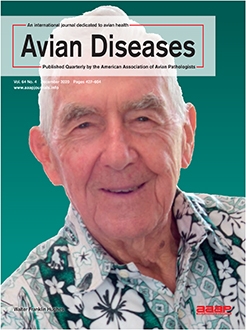Since August 2014, the University of Minnesota Veterinary Diagnostic Laboratory has received cases of turkey enteritis that are clinically different from previously described cases of poult enteritis syndrome and light turkey syndrome. The birds develop dark green and extremely foul-smelling diarrhea starting at 8–10 wk of age, which may last up to 15–16 wk of age. The affected turkey flocks show poor uniformity, and feed conversion and market weights are reduced. Multiple-age farms are affected more often than the single-age farms. Morbidity varies from flock to flock and in some cases reaches 100%. At necropsy, undigested feed with increased mucus is observed in the intestines along with prominent mucosal congestion and/or hemorrhage. Microscopically, lymphocytic infiltrates expand the villi in duodenum and jejunum to form lymphoid follicles, which are often accompanied by heterophils. Next generation sequencing (Illumina Miseq) on a pool of feces from affected birds identified genetic sequences of viruses belonging to Astroviridae, Reoviridae, Picornaviridae, Picobirnaviridae, and Adenoviridae. On testing pools of fecal samples from apparently healthy (16 pools) and affected birds (30 pools), there was a higher viral load in the feces of affected birds. Picobirnavirus was detected only in the affected birds; 20 of 30 pools (66.7%) were positive. These results indicate that a high viral load of turkey picobirnavirus alone, or in association with novel picornaviruses, may be a cause of this new type of turkey enteritis.
How to translate text using browser tools
12 June 2020
Enteric Viruses Associated with Mid-growth Turkey Enteritis
Sunil K. Mor,
Rahul Kumar,
Nader M. Sobhy,
Azad Singh,
Nima Kakrudi,
Rosemary A. Marusak,
Sagar M. Goyal,
Robert E. Porter
ACCESS THE FULL ARTICLE

Avian Diseases
Vol. 64 • No. 4
December 2020
Vol. 64 • No. 4
December 2020
diarrhea
NextGen sequencing
Picobirnavirus
picornavirus
turkey enteritis




